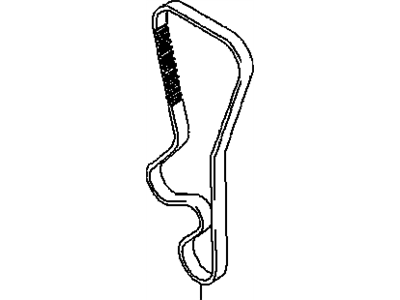
My Garage
My Account
Cart
Genuine Chevrolet Tracker Timing Belt
Engine Timing Belt- Select Vehicle by Model
- Select Vehicle by VIN
Select Vehicle by Model
orMake
Model
Year
Select Vehicle by VIN
For the most accurate results, select vehicle by your VIN (Vehicle Identification Number).
2 Timing Belts found
Chevrolet Tracker Timing Belt
The Timing Belt in Chevrolet Tracker is known to be very vital in that it helps to in the right timing of opening and closing the engine valves through the synchronizing of the crankshaft and camshaft. This specific type of belt is usually created of rubber and has fibers added to it; benefits of this kind of belt include, for instance, affordability and minimized wear. Eventually, they have to be replaced from time to time since they become worn out. A range of timing belts has been incorporated into the different models of Tracker cars, including some of these already containing curved teeth so as to enhance belt performance by cutting down on noise. These belts not only synchronize the crankshaft and camshaft but also the water and oil pumps and a few other related parts.
Each OEM Chevrolet Tracker Timing Belt we offer is competitively priced and comes with the assurance of the manufacturer's warranty for the part. Furthermore, we guarantee the speedy delivery of your orders right to your doorstep. Our hassle-free return policy is also in place for your peace of mind.
Chevrolet Tracker Timing Belt Parts Questions & Experts Answers
- Q: What are the precautions and steps to follow when removing and installing a Timing Belt and Variable Timing Sprocket on SOHC engine on Chevrolet Tracker?A:Due to how complex timing is, you need top experts to set it, or serious engine damage might happen. Check all your work carefully before the engine starts. First, drain and remove the refrigerant if needed from air-conditioned models; disconnect the hose from its suction pipe. Disconnect the negative battery cable. If you have an 8-valve engine, take off the camshaft cover and turn all the trouble adjustment screws to relax them. Park your car, lock the rear wheels, lift the front of the car safely, and leave it in place. Turn off the water pump pulley nuts, then take off the drive belts. Take out the fan, fan cover, and water pump drive belt assembly. Keep track of the three crankshaft pulley bolts. Also note that you must remove the center bolt if you plan to replace the crankshaft sprocket. While replacing the timing belt, mark the correct way to rotate it before taking off the timing belt cover. Turn the adjusting nut and bolt loose, move the tensioner pulley, and gently pull the timing belt out of position around the sprockets. When you switch the oil pump or crankshaft front oil seal, push off the crankshaft sprocket and belt guide to access them. Take out the camshaft sprocket bolt, and then lift off the seal cover. Turn the tensioner pulley to find any rough surfaces, then look for damage on the sprockets. Look at the belt for wear signs and replace it when needed. Run the crankshaft manually to turn it two whole times to test if it feels hard to move. Put the camshaft seal cover and timing belt sprockets back in place, making sure their dowel and keyway fit well. Fit the timing belt on between the camshaft and crankshaft sprockets, then line up their mark witnesses. Loosen the tensioner to take up slack. Turn the crankshaft right by at least four full turns, then look again at how the timing marks are lined up. Rejoin the tensioner bolt and nut, then put back other parts in reversed order, measure valve gaps on eight-valve motors, fire up the engine to make sure timing and valve distance are accurate before taking the car for a test drive.












